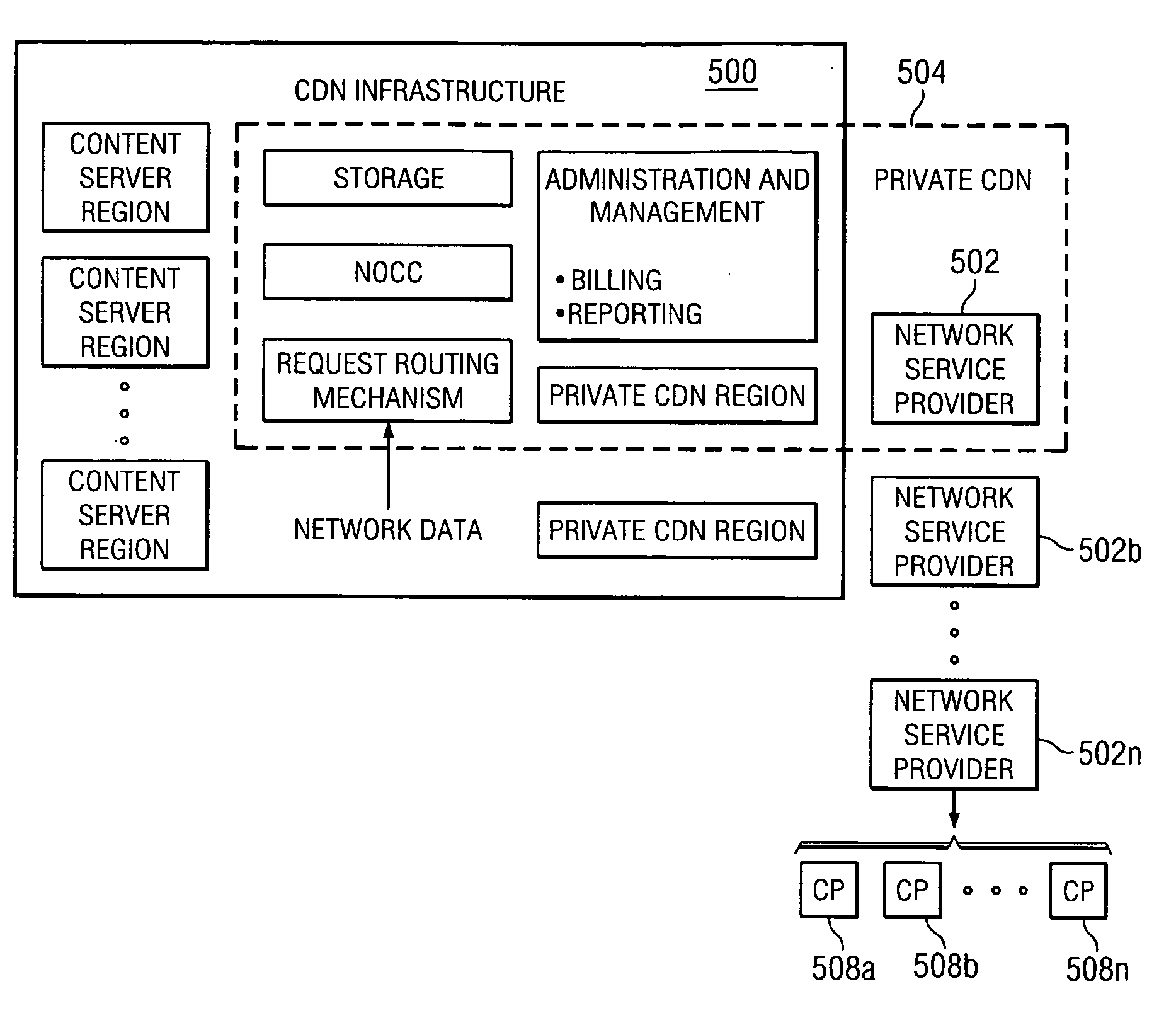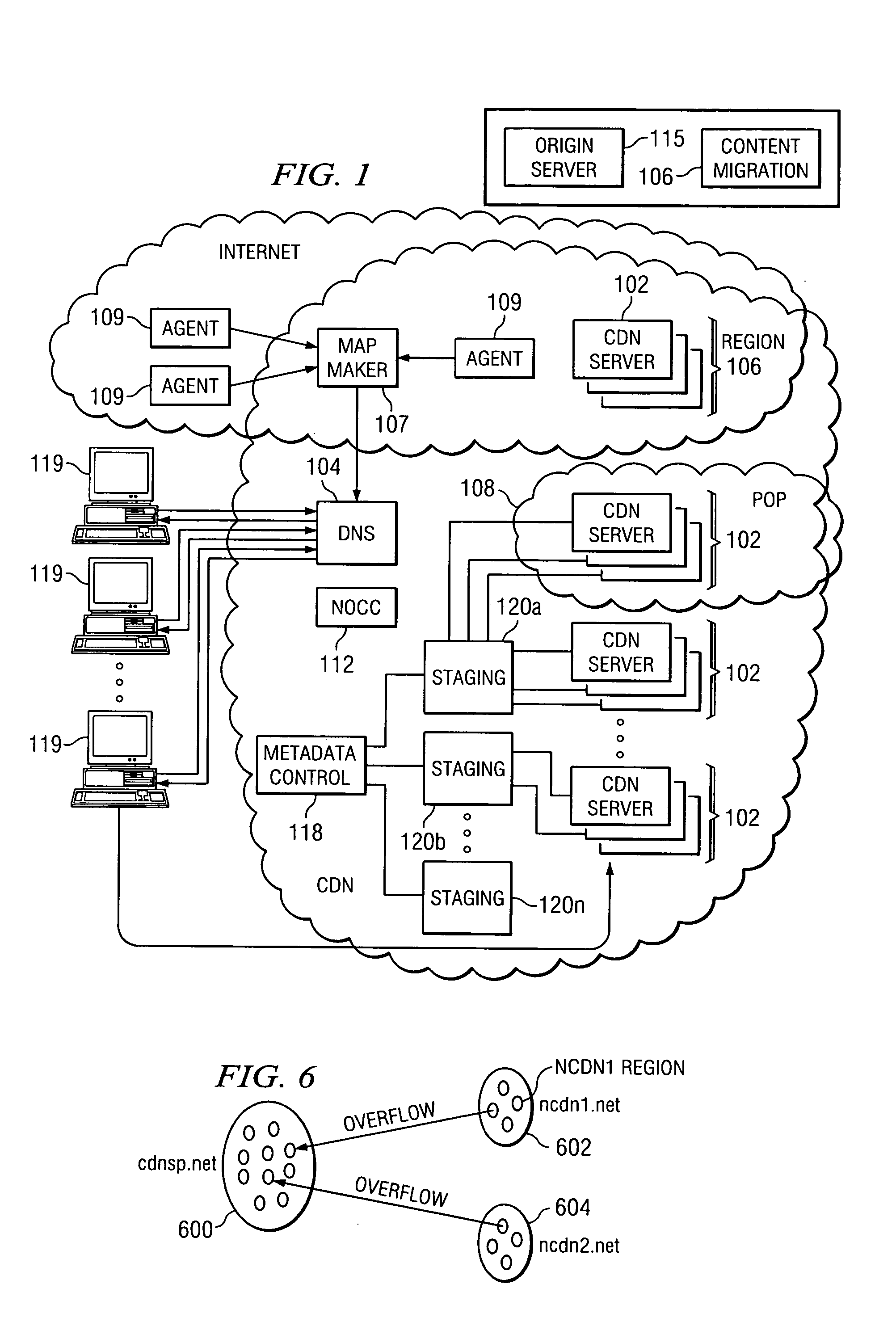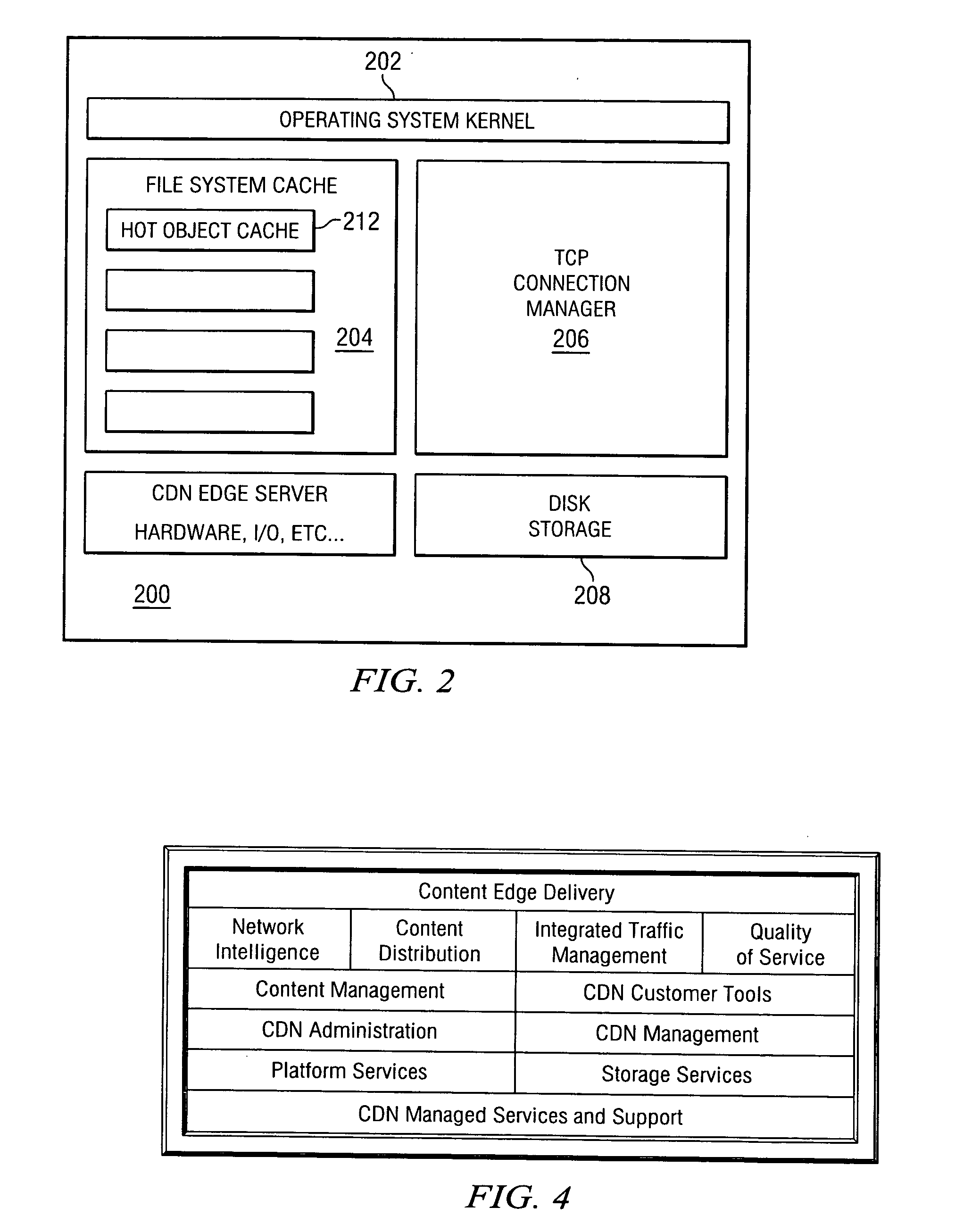Content delivery network service provider (CDNSP)-managed content delivery network (CDN) for network service provider (NSP)
a content delivery network and content delivery technology, applied in the field of digital content delivery over a distributed network, can solve the problems of prohibitive cost of designing, installing, managing and operating a full end-to-end cdn, complex implementation, and difficult management of a global distributed network, and achieves the effect of simplifying the provisioning of private cdn, facilitating content peering arrangements, and large capital investmen
- Summary
- Abstract
- Description
- Claims
- Application Information
AI Technical Summary
Benefits of technology
Problems solved by technology
Method used
Image
Examples
Embodiment Construction
[0022]As seen in FIG. 1, a known Internet content delivery infrastructure usually comprises a set of “surrogate” origin servers 102 that are located at strategic locations (e.g., Internet network access points, and the like) for delivering copies of content to requesting end users 119. A surrogate origin server is defined, for example, in IETF Internet Draft titled “Requirements for Surrogates in the HTTP” dated Aug. 9, 2000. The request-routing mechanism 104 allocates servers 102 in the content delivery infrastructure to requesting clients in a way that, for web content delivery, minimizes a given client's response time and, for streaming media delivery, provides for the highest quality. The distribution infrastructure consists of on-demand or push-based mechanisms that move content from the origin server to the surrogates. A CDN service provider (CDNSP) may organize sets of surrogate origin servers as a “region.” In this type of arrangement, a CDN region 106 typically comprises a ...
PUM
 Login to View More
Login to View More Abstract
Description
Claims
Application Information
 Login to View More
Login to View More - R&D
- Intellectual Property
- Life Sciences
- Materials
- Tech Scout
- Unparalleled Data Quality
- Higher Quality Content
- 60% Fewer Hallucinations
Browse by: Latest US Patents, China's latest patents, Technical Efficacy Thesaurus, Application Domain, Technology Topic, Popular Technical Reports.
© 2025 PatSnap. All rights reserved.Legal|Privacy policy|Modern Slavery Act Transparency Statement|Sitemap|About US| Contact US: help@patsnap.com



